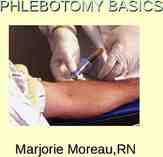Manufacturing Readiness Levels (MRLs) Executive Overview
10 Slides265.26 KB
Manufacturing Readiness Levels (MRLs) Executive Overview
Goal of Using MRLs Address manufacturing & quality risks & issues throughout the development process to provide products that consistently meet customer requirements 2
The Benefits of MRLs Ensures manufacturability and producibility of the product design are assessed early in development Provides programs a well-documented process/roadmap to achieve manufacturing maturity Provides early understanding of manufacturing risk and maturation Manages manufacturing maturity throughout the program’s supply chain and customer base Identifies systemic manufacturing problems across programs, contractors, and the industrial base MRLs offer a competitive advantage 3
The Development of MRLs MRLs have been in development and used for over 15 years The MRL Working Group meets regularly to collaboratively improve the process and tools Open participation among government, industry, and academia The Working Group host an annual workshop to develop and review significant proposed changes with the user community before deployment 4
The Deployment of MRLs Industry partners are using MRLs in both their government and commercial business sectors SAE Industry Standard AS6500 (Manufacturing Management Program) requires the use of MRLs Some service policy is requiring MRLs on acquisition contracts Congressional language in law requires MRLs on key acquisition programs GAO identifies the use of MRLs as a Best Practice Using MRLs is considered a Best Practice in both industry and government 5
MRL Deployment Challenges Unrealistic Expectations -- MRLs do not solve problems; they assist in identifying risk and issues Concern that programs will have delays when manufacturing maturity is not achieving the target MRL Inconsistent understanding and interpretation of how to apply MRLs Workforce inadequately trained to effectively and efficiently deploy MRLs Perceived cost/benefit of using MRLs -- This has been hard to quantify, but so is the return on applying sound systems engineering 6
Next Steps Continue to refine and improve the MRL process through Quarterly MRL Working Group meetings Annual MRL Industry Workshop MRL sessions at the annual Defense Manufacturing Conference Continue to educate the workforce on effective use MRLs AFIT SYS 213 ‘Management of the Mfg Readiness Process’ and Air Force Advanced MRL class at Miami (OH) University Expand MRL info at DAU and into various DAU courses Increase the participation of MRL users – especially smaller businesses in the MRL Working Group 7
Key Products Available to Help You Implement MRLs MRL body of knowledge -- www.dodmrl.org MRL Deskbook – the “how to” of MRLs/MRAs MRL Definitions Past document versions available MRL Criteria – used to assess maturity MRL User’s Guide – MRA tool DOCENT – MRA tool/objective evidence repository MRL Working Group contact information 8
Summary The MRL process is accepted as a Best Practice throughout DoD and industry The process continues to be refined and improved based on user feedback The MRL Working Group welcomes your participation 9
DoD MRL Assessment Risk assessment methodology developed by DoD and Industry Proven effective by Industry and DoD and identifies as a best practice by the GAO Applied by Service policies, Congressional language and industry standard AS6500 on contracts Continues to evolve addressing new technologies and risks Proper implementation, training, and expectations critical to success Resource Website: www.dodmrl.com















